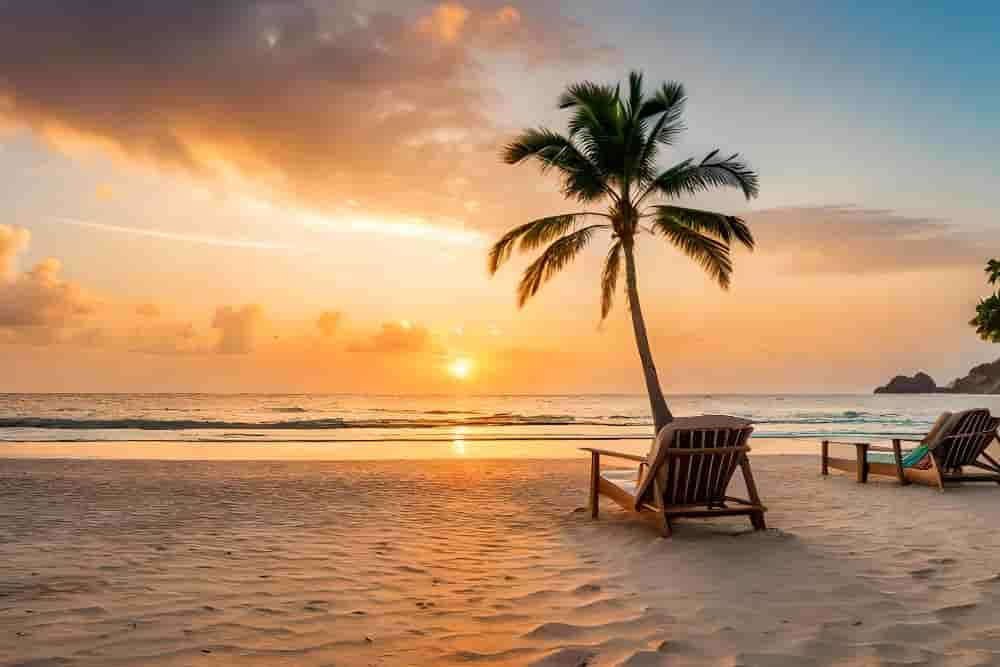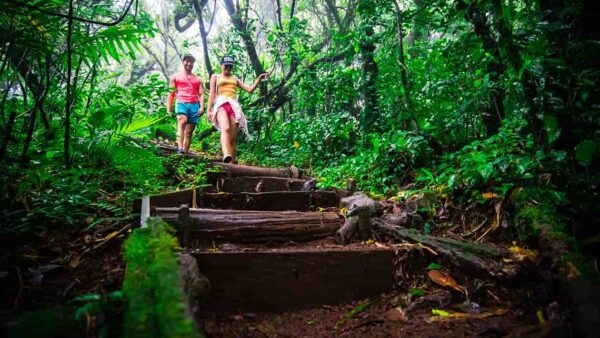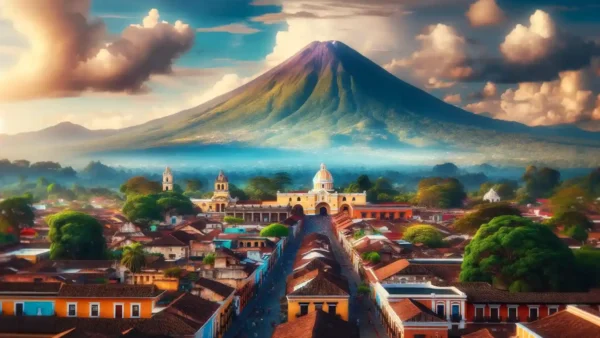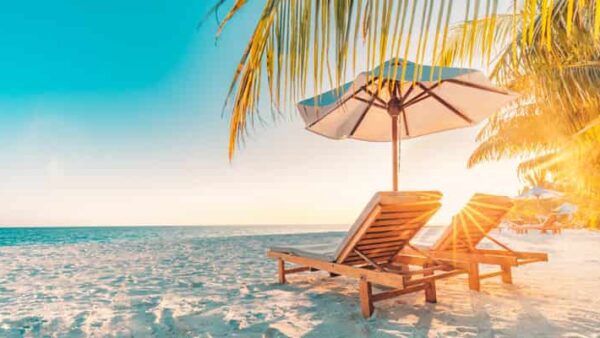Today, we embark on a journey to explore Punta Uva Beach’s breathtaking beauty of Limon’s best beaches in Costa Rica. Join us as we traverse the Cahuita National Park, a 9-kilometer trail boasting stunning views of the sea and lush landscapes.
To plan your trip effectively, Check the Punta Uva Travel Guide with the most touristy beaches located approximately two hours away in Puerto Viejo.
Starting from Cahuita and moving through the Cahuita National Park, we’ll uncover the beauty of Playa Cocles, Playa Chiquita, and Punta Uva.
The best way to explore these gems is by renting bicycles, making the journey smooth and enjoyable. The route is approximately 10 kilometers, offering a flat terrain suitable for riders of all levels.
The Punta Uva is one of the best beaches, so we’re heading there next. The journey is made easier by the bikes, and we’ll share valuable tips on detours and must-visit spots, like the Punta Agua viewpoint and cave.
If you want a nice picture on a beach with swings on palm trees, Punta Uva is the place to be. It’s also a good spot for sloth spotting.
Punta Uva Beach is where you can rent kayaks. You can kayak down the river that meets the sea, making it a popular activity. If you’re looking for something to do, kayaking is a great option here.
Punta Agua is a paradise that lives up to its reputation, with pristine waters and captivating landscapes. As we wrap up our exploration.
Punta Uva is known for its calm waters, making it an ideal destination for a family adventure. Both sides have charming restaurants nearby, and you can explore both to decide which activities suit you best. Punta Uva is one of the Best Travel Destinations in Central America.
One of the main reasons why to came to this region of Costa Rica was because of its unique culture and history. Before the 70s, when the first road was built into town, this area of Puerto Viejo was just a small isolated fishing village consisting of Afro-Caribbean and Indigenous people. The inaccessibility really helped maintain their cultures and customs here, unlike much of the rest of Costa Rica. Of course, over the years, it’s become a bit more of a tourist destination, but you can still feel that culture in the streets and everywhere you go.
While you’re walking around town, you’ll probably notice the beef patties being sold on almost every corner, as well as reggae music pumping out of the bars and Rasta colors all over. So, you might be wondering, where does that influence come from? Well, we read that Jamaicans came to Costa Rica in the late 1800s to work on the construction of the railroad and banana plantations. Instead of returning to Jamaica, they stayed here, established their roots, had families, and gained citizenship. So, that’s the reason you’re able to experience their rich culture here.
There are two main areas of Punta Uva: the first main entrance on the Puerto Viejo side of the cliff and the Arricife beach on the far side or Manzanillo side of the cliff. Both sides are extremely beautiful, so which one should you choose? Well, we say choose both.
Let’s move on to the second entrance on the Manzanillo side, which is easily accessible. Simply head back to the main road, make a left towards Manzanillo, go to the Arrecife side, and make another left. If you’re walking or biking, follow the road around the cliff until you reach the other side.
If you’re looking to relax and take it easy, you can go to either entrance and just hang out, planning to explore the other side the next day. But if time is short and you want to see both, you can easily do it in a couple of hours, whether you’re walking, biking, or driving. It won’t take long to experience the beauty of both sides.
Top 5 Essential Travel Tips – Punta Uva, Costa Rica
- If you prefer fewer crowds, avoid weekends and holidays when many visitors come from San Jose and other parts of Costa Rica. These times can be lively but less peaceful.
- Always watch your belongings and lock your car, even in seemingly carefree paradises. Safety first!
- If you’re walking, biking, or relying on public transportation, leave before 4 pm to ensure you reach your destination before nightfall. The roads get darker and potentially more dangerous after dark.
- Bring just enough cash for the day, as you might need it for equipment rental or snacks. Only bring what you can afford to lose and a bit extra for emergencies.
- Swim at your own risk. While these areas traditionally offer calm waters, conditions can change. Since there are no lifeguards, it’s essential to be cautious when swimming.
Best Time To Visit Punta Uva
The best time to visit Punta Uva, Costa Rica, is typically during the dry season, which runs from December to April. During these months, you can expect sunny and relatively dry weather, making it ideal for enjoying the beautiful beaches and outdoor activities.
The dry season is considered the high tourist season in Costa Rica, so you can expect more visitors during this time. If you prefer a quieter experience, you might consider visiting during the shoulder seasons, which are the transition months between the wet and dry seasons—November and May.
Keep in mind that Costa Rica has a tropical climate, and even during the wet season (May to November), the weather in Punta Uva is still generally pleasant, with intermittent rain showers. The lush vegetation during the wet season also adds to the area’s natural beauty.
Ultimately, the best time to visit Punta Uva depends on your preferences for weather, crowd levels, and the kind of experience you are seeking.
FAQ For Punta Uva
Here are some frequently asked questions (FAQs) that may help you learn more about Punta Uva:
- Where is Punta Uva located?
- Punta Uva is situated on the southeastern coast of Costa Rica, in the province of Limón. It is part of the larger region known as the Southern Caribbean.
- How do I get to Punta Uva?
- The most common way to reach Punta Uva is by flying into Juan Santamaría International Airport (SJO) in San José and then taking a domestic flight to Limón or driving to Limón. From Limón, you can take a bus, shuttle, or drive to Punta Uva.
- What are the attractions in Punta Uva?
- Punta Uva is known for its stunning beaches, lush rainforests, and vibrant wildlife. Visitors can enjoy activities such as snorkeling, swimming, hiking, and wildlife watching. Cahuita National Park and Gandoca-Manzanillo National Wildlife Refuge are nearby and offer opportunities for exploring nature.
- What is the best time to visit Punta Uva?
- The dry season, typically from December to April, is considered the best time to visit Punta Uva. During this period, the weather is generally sunny with less rainfall. However, the region can be visited throughout the year.
- Are there accommodations in Punta Uva?
- Yes, Punta Uva offers various accommodation options, including hotels, resorts, eco-lodges, and vacation rentals. It’s advisable to book your accommodations in advance, especially during the peak tourist season.
- What should I pack for a trip to Punta Uva?
- Essentials include lightweight and breathable clothing, swimwear, sunscreen, insect repellent, a rain jacket, comfortable shoes for walking or hiking, and any necessary travel documents.
- Is Punta Uva safe for tourists?
- Like many tourist destinations, it’s important to take standard safety precautions. Costa Rica, in general, is considered a safe destination for tourists, but it’s advisable to be aware of your surroundings and take precautions against petty theft.
- What activities are available in Punta Uva?
- Popular activities in Punta Uva include beachcombing, snorkeling, surfing, hiking, bird watching, and wildlife tours. The area is known for its biodiversity, so nature enthusiasts will find plenty to explore.
If you’re seeking a fantastic family day in the Caribbean, we highly recommend a visit to Punta Uva. It’s one of the best beaches globally, so travel smart, travel safe, and see you next time on Makai’s World and Costa Cousins Adventures.




